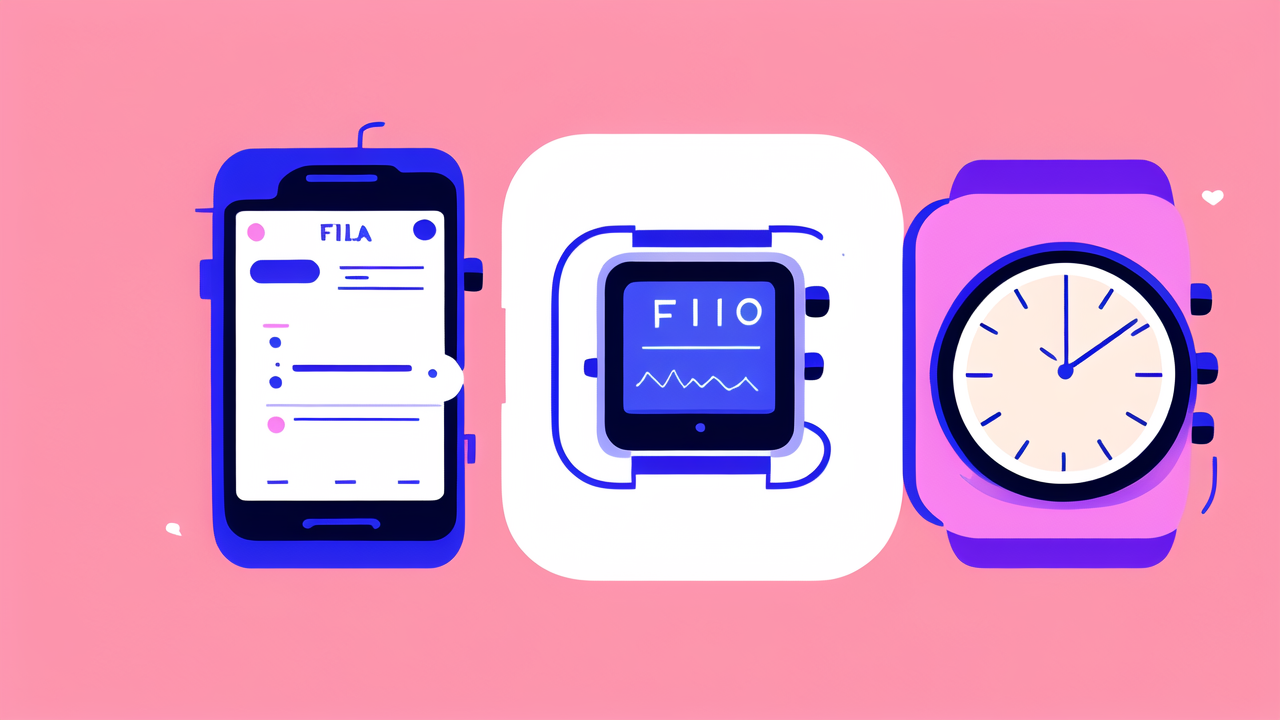The Emergence of Smart Bracelets in Health Monitoring
Overview of Smart Bracelet Technology
Smart bracelets are wearable devices that track health data. They use sensors to monitor vital signs and activity levels. Most smart bracelets can track heart rate, steps, and sleep patterns. Some advanced models can measure blood oxygen levels and stress.

These devices connect to smartphones via Bluetooth. They sync data to apps for easy viewing and analysis. Smart bracelets often have long battery life, lasting days or weeks. Many are water-resistant, allowing for continuous wear.
The design of smart bracelets varies widely. Some look like traditional watches, while others are sleek and minimalist. They come in different colors and materials to suit various styles. The goal is to make health monitoring both functional and fashionable.
Advantages of Wearable Devices in Healthcare
Wearable devices offer many benefits in healthcare. They provide continuous health monitoring without disrupting daily life. This allows for early detection of potential health issues. Patients can track their own health data, promoting self-care and awareness.
Doctors can access real-time patient data through these devices. This leads to more informed and timely medical decisions. Wearables can motivate users to be more active and health-conscious. They often include features like step counters and calorie trackers.
For people with chronic conditions, smart bracelets can be especially helpful. They can alert users to abnormal health patterns. Some devices can remind patients to take medication. This ongoing monitoring can help reduce hospital readmissions.
Regulatory Perspective on Health-Focused Wearables
Health-focused wearables face regulatory scrutiny in many countries. Regulators often classify them as medical devices. This means they must meet strict standards for safety and effectiveness. The FDA in the US has specific guidelines for health wearables.
Regulators focus on data accuracy and privacy. They ensure devices provide reliable health information. Companies must prove their devices are safe and effective through testing. Some wearables require clinical trials before approval.
Privacy is a key concern for regulators. They mandate strong data protection measures. Companies must be transparent about data collection and use. Regulators also look at how wearables integrate with existing healthcare systems.
Integrating Smart Bracelets into Healthcare Systems
The Role of Bracelets in Personalized Medicine
Smart bracelets play a crucial role in personalized medicine. They collect individual health data over time. This data helps create tailored treatment plans. Doctors can see how patients respond to treatments in real-time.

These devices can track medication adherence. They alert patients when it's time to take medicine. This improves treatment effectiveness. Smart bracelets can also detect early signs of health issues.
They allow for more frequent health checks without hospital visits. This is especially useful for patients with chronic conditions. Personalized alerts can remind users of health goals or appointments. The data from smart bracelets helps in creating more accurate health profiles.
Data Analysis and Interoperability Challenges
Analyzing data from smart bracelets poses challenges. The sheer volume of data can be overwhelming. Healthcare systems need robust analytics tools. These tools must handle continuous streams of health data.
Interoperability is a major hurdle. Different devices often use different data formats. This makes it hard to combine data from various sources. Healthcare systems need standardized data formats.
Security is crucial when handling sensitive health data. Systems must protect data during transmission and storage. There's also the challenge of integrating wearable data with electronic health records. This requires careful planning and technical solutions.
Case Studies: Successful Implementations in Healthcare
Several healthcare providers have successfully implemented smart bracelet technology. One hospital used smart bracelets to monitor cardiac patients. This led to earlier detection of heart rhythm issues. It reduced hospital readmissions by 30%.
A diabetes management program used smart bracelets to track blood sugar levels. Patients saw improved glucose control within three months. The program also increased patient engagement in self-care.
In elderly care, a nursing home used smart bracelets to monitor residents. The devices detected falls and unusual activity patterns. This improved response times and resident safety. Staff could prioritize care based on real-time data.
Future Trends and Considerations in Wearable Health Technology
Innovations on the Horizon for Health Bracelets
Future health bracelets will offer more advanced features. Some may include micro-needles for painless blood testing. This could allow for continuous glucose monitoring without finger pricks.

Researchers are developing bracelets that can detect early signs of diseases. These may include cancer or neurological disorders. Advanced sensors might measure blood pressure without a cuff.
Smart fabrics could make bracelets more comfortable and durable. They might integrate seamlessly into clothing. Future devices may use AI to predict health events before they occur. This could revolutionize preventive care.
Addressing Privacy and Ethical Concerns in Wearable Tech
Privacy is a major concern with health wearables. Users worry about who can access their data. Companies must be transparent about data collection and use. Strong encryption and secure storage are essential.
There are ethical concerns about constant health monitoring. It could lead to discrimination in insurance or employment. Policymakers need to address these issues. Users should have control over their data sharing.
Consent is crucial, especially for vulnerable populations. Children and elderly users may need special protections. There's also the risk of over-reliance on technology. Users should be educated about the limits of wearable devices.
The Impact of AI and Machine Learning on Wearable Health Devices
AI and machine learning are transforming wearable health devices. They can analyze vast amounts of data to detect patterns. This leads to more accurate health predictions. AI can personalize health recommendations based on individual data.
Machine learning algorithms can improve device accuracy over time. They learn from user feedback and corrections. AI can also help in interpreting complex health data. This makes it easier for users and doctors to understand.
In the future, AI might enable real-time health coaching through wearables. It could offer personalized advice based on current health status. AI could also help in early disease detection by spotting subtle changes in data patterns.




Leave a comment
This site is protected by hCaptcha and the hCaptcha Privacy Policy and Terms of Service apply.